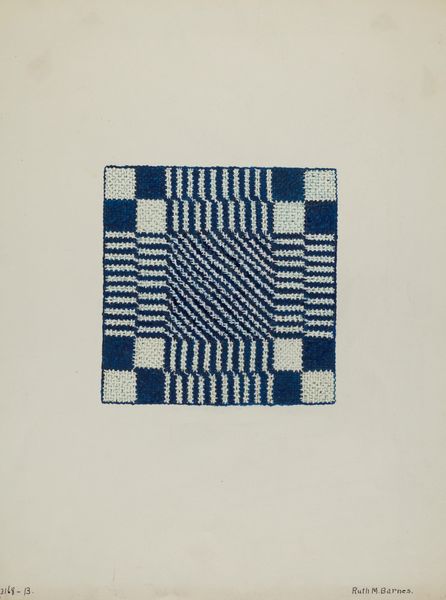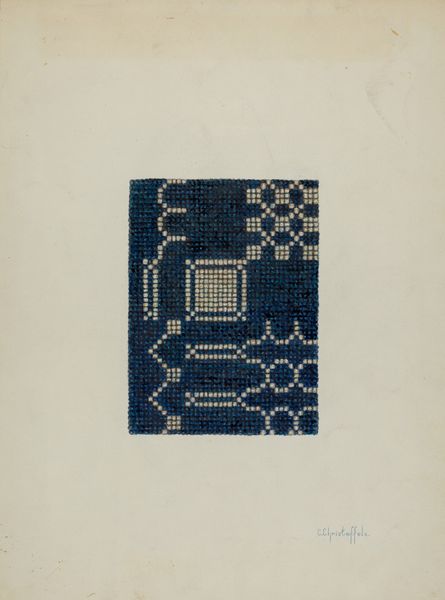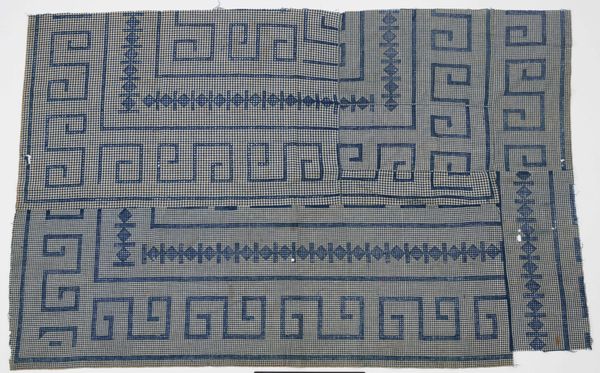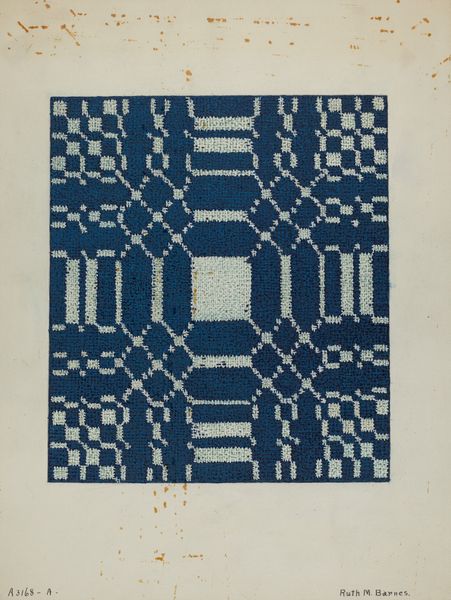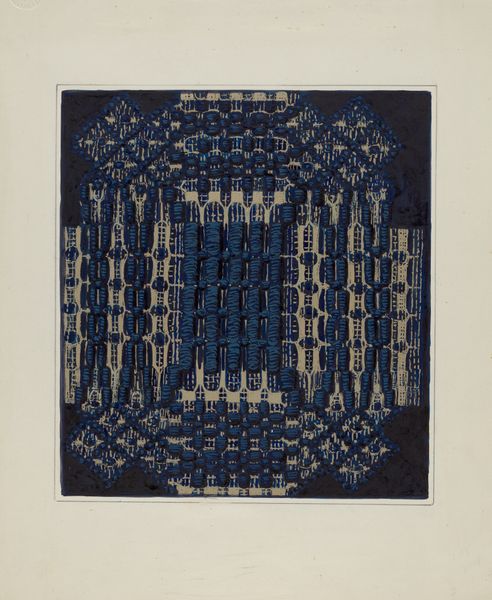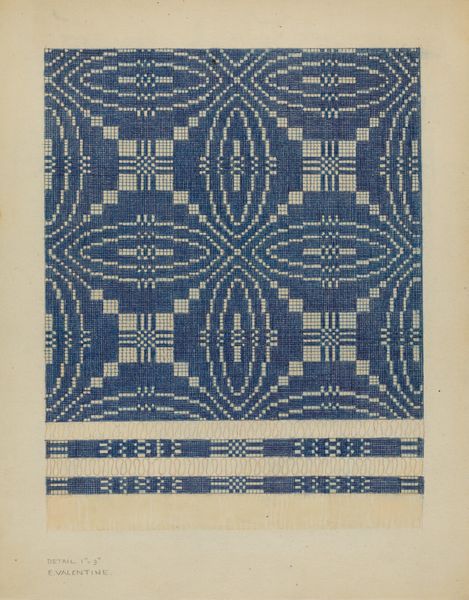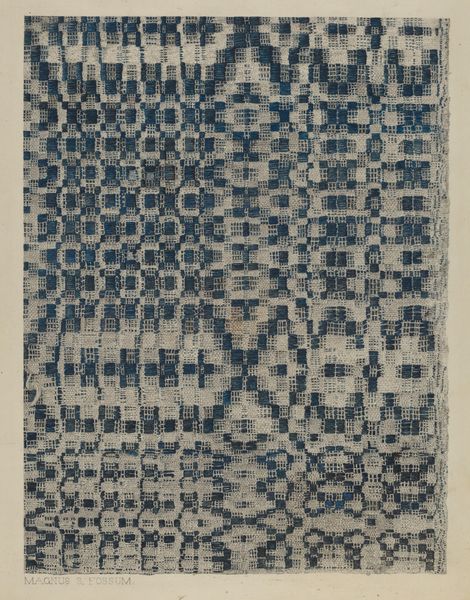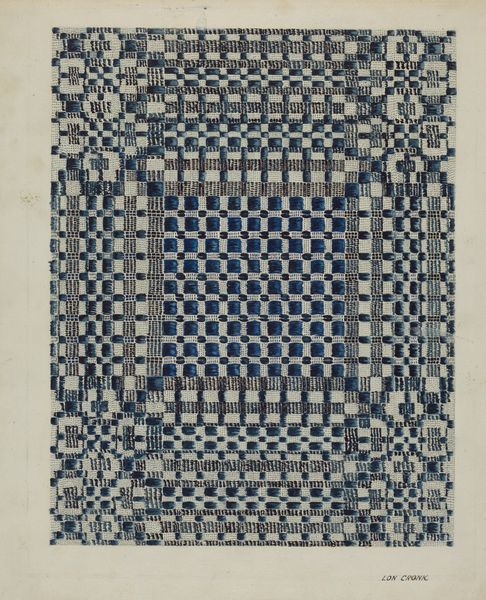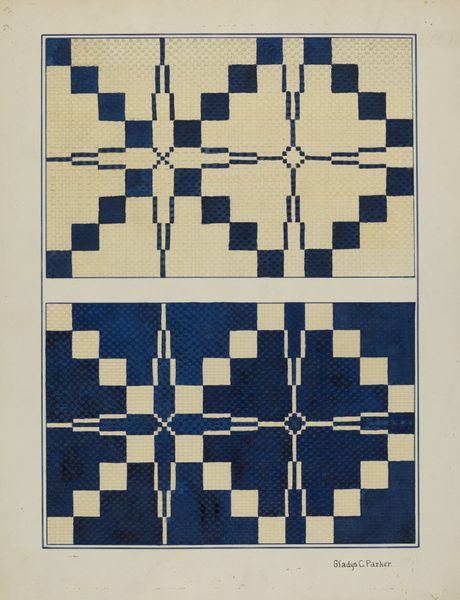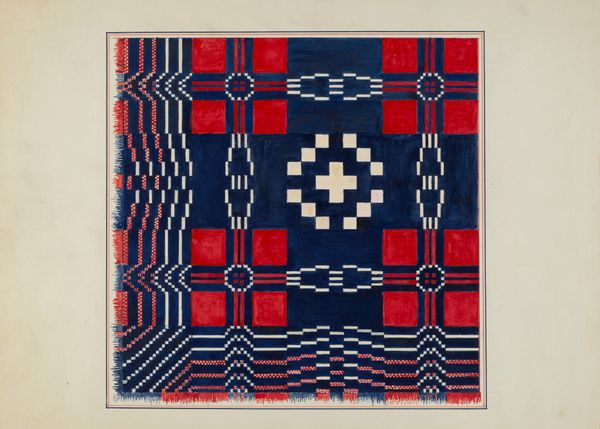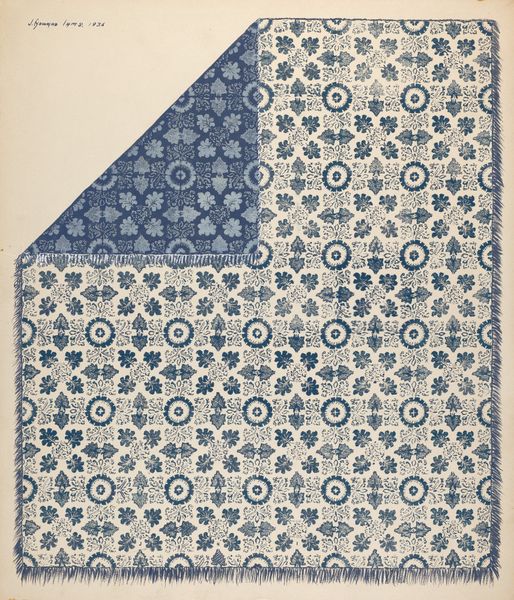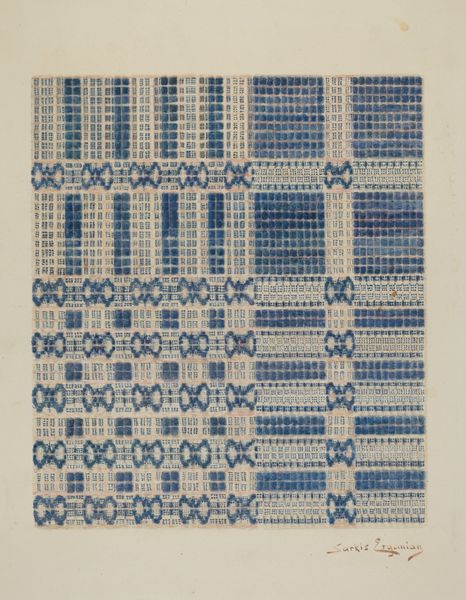
paper
#
paper
#
geometric
#
decorative-art
#
decorative art
Dimensions: overall: 35.7 x 26.8 cm (14 1/16 x 10 9/16 in.)
Copyright: National Gallery of Art: CC0 1.0
Curator: Looking at "Coverlet (Section)" created around 1940 by Ruth M. Barnes, it appears to be a mixed-media design, likely intended as a weaving draft. We see a meticulous geometric pattern in shades of blue and white. Editor: It strikes me as strikingly modern, despite its age. There’s something almost digital about the blocky, pixelated forms. You can almost feel the grid it's built on. Curator: Indeed. Quilts and coverlets were, historically, very important in communities and the creation of such textiles would often be communal in nature. Editor: This particular work being on paper suggests it functions less as the ‘end product’ and more a study, a blueprint, which really underscores the process, the planning involved. What labor was needed to translate this sketch? Curator: Exactly. These coverlets also were symbols of social status and family history; the patterns would often be passed down. It reflects the individual artist’s place within that context of textile production, a key part of decorative arts. Editor: So much textile work has historically been overlooked in art history – deemed craft, not ‘art’. But pieces like this force us to reconsider the role of women's labor, skill and design that have too long been rendered invisible. Curator: Absolutely. It challenges our notions of high art versus craft and demands we examine the social implications inherent within material culture. The choice of repeating geometric shapes speaks to this blend. Editor: And beyond geometry, I’d note a resemblance with the kind of imagery and composition you might expect from works that embrace ‘pattern-and-decoration’. Curator: A connection I share as the social values associated with pattern and ornamentation changed as they were being elevated within fine art discourses. What do you make of that dark background? Editor: The indigo lends a real depth and complexity; there’s an emotional resonance to such pieces born out of utilitarian need but rich in social narratives. The choice is interesting, to bring that out as its ground instead of using a more natural fiber. Curator: Right. The work invites conversations about access, privilege, design history. Hopefully we were able to invite them, too, today. Editor: It’s about remembering art, in all its diverse forms, reflects and is interwoven with lives, both rich and obscured by history.
Comments
No comments
Be the first to comment and join the conversation on the ultimate creative platform.
